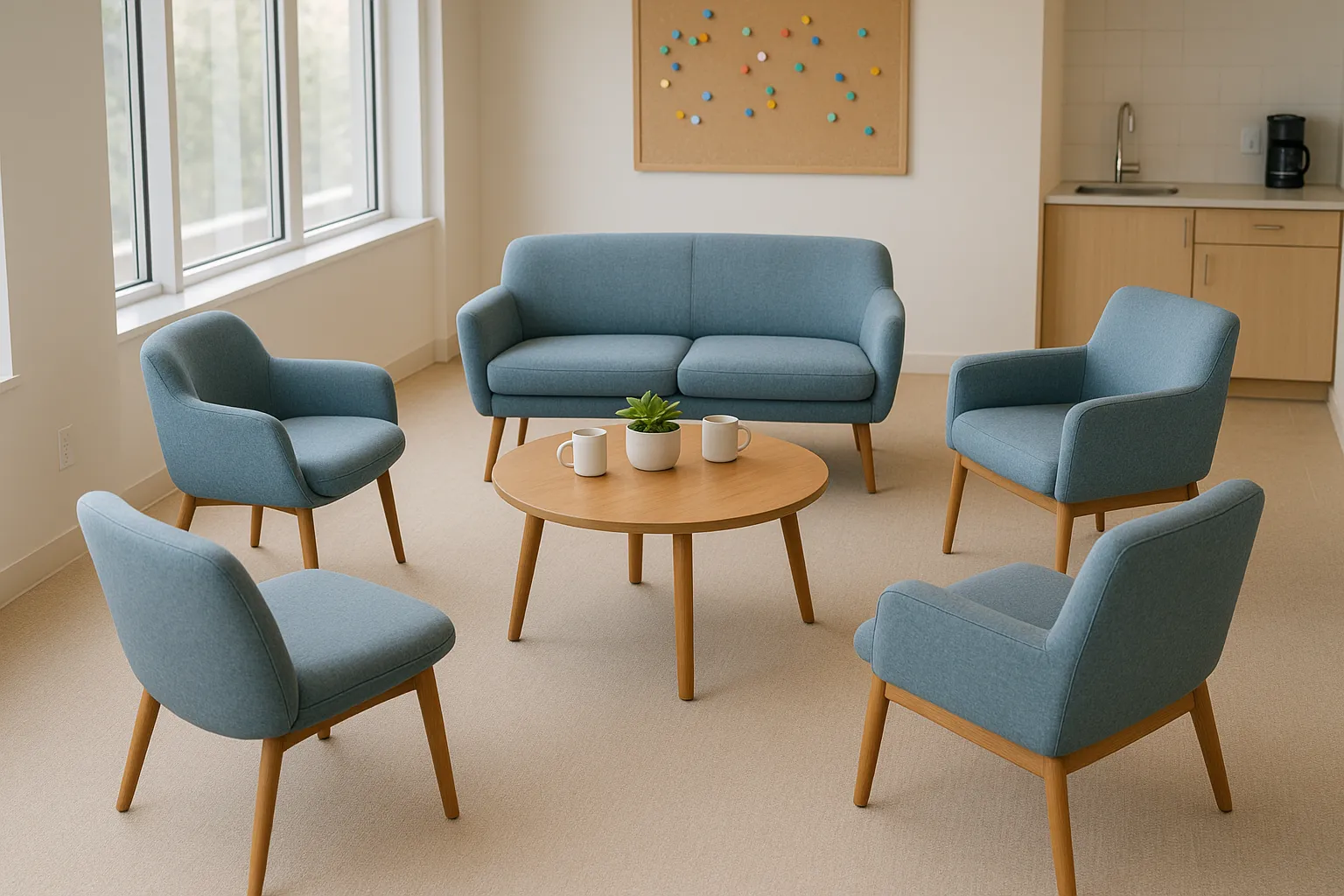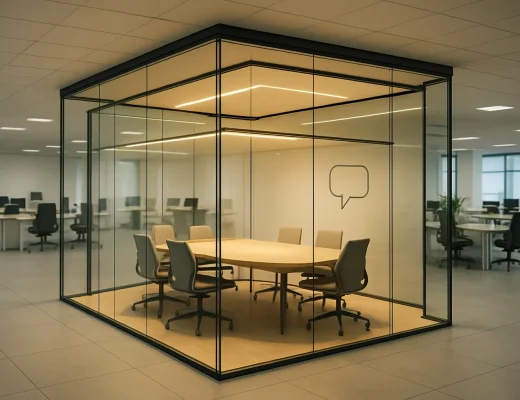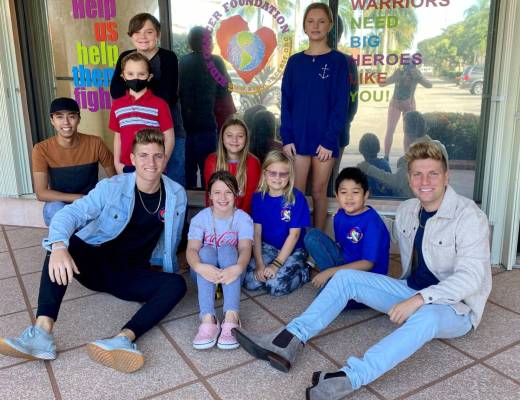How Companies Foster Connection Among Employees: 16 Ways to Build Community
Building community among employees is essential for organizational success. We asked industry experts to share one thing their company does to foster a sense of community among employees — and how that impacts the overall work environment. Discover how structured onboarding, community service projects, and intentional connection spaces can strengthen employee bonds while fostering an authentic company culture.- Shared Wins Ritual Develops Natural Connections
- Simulator Lab Days Connect Everyone To Products
- Virtual Shared Wins Sessions Connect Remote Teams
- Storytelling Lunches Reveal Humans Behind Titles
- Scheduled Help Sessions Make Progress Visible
- Community Service Projects Unite Team Members
- Structured Onboarding Creates Cross-Department Relationships
- Intentional Connection Spaces Strengthen Employee Bonds
- Monthly Show & Tell Mornings Boost Transparency
- Trust Through Empowerment Builds Strong Community
- Remote Team Builds Personal Connections
- Raw Openness Creates Authentic Company Culture
- Cross-Functional Workshops Break Down Departmental Silos
- TALK Principle Fosters Supportive Team Environment
- Celebrating All Wins Creates Supportive Camaraderie
- Benefits Platforms Transform Teams Into Communities
Shared Wins Ritual Develops Natural Connections
One seamless way that we build community is by starting all team calls off with shared wins. Everyone’s got one minute to discuss something they’re excited about, from closed deals to their kid learning how to ride a bike. Those small slices into each other’s lives develop natural topics, and I’ve seen teammates from other nations go on to share parenting tips or discuss ideas on automations simply because of that five-minute ritual. The effect is evident. If one runs into a dead-end, they’re not hesitant to seek advice due to having already familiarized themselves with coworkers beyond their title. Such familiarity develops cooperation sooner and reduces attrition later. Community isn’t necessarily about perks or pricey getaways. More frequently, it’s about modest daily routines that make individuals feel they belong to something bigger than their task list. Todd Anderson, Owner, Lodestar Talent
Todd Anderson, Owner, Lodestar Talent
Simulator Lab Days Connect Everyone To Products
One initiative that truly fosters community is our “Simulator Lab Open Days.” These are informal sessions where employees from different departments get to experience the simulators we design, test them hands-on, and share feedback directly with the engineering team. It creates an environment where even non-technical employees feel connected to the core of our business, and technical teams get to hear diverse perspectives. Beyond the professional insights, it sparks conversations, breaks silos, and gives everyone a sense of pride in what we collectively create. The impact on our work culture has been significant. People collaborate more freely, respect each other’s roles better, and feel that their contributions matter to the bigger picture. It has built a culture of shared ownership and enthusiasm, making the workplace more engaging and cohesive.
 Tejal Shanbhag, HR Professional, Tecknotrove
Tejal Shanbhag, HR Professional, Tecknotrove
Virtual Shared Wins Sessions Connect Remote Teams
Since everything we do is virtual, establishing community with employees is a purposeful effort and requires extra thoughtfulness. One example of this is through “shared wins” sessions. Every couple of weeks we host a time for the team to come together online to share their wins with the team and challenges. It’s not a meeting or agenda with metrics to discuss or plan. It is simply space to share stories. When one member shares a message from a parent or a moment of breakthrough with their students, it resonates with everyone in the room. It puts everyone back on mission. It helps people feel less alone. It has also created a culture in which feedback is shared with ease. A teacher may pick up a strategy from a colleague during the session, or they may try something new that they have heard. Innovation keeps spreading naturally because it is based on real experiences, not just what we have been told to do from the top. Mostly it has been cultural impact. The team feels more connected, even though we are scattered across countries and time zones. They feel they can state their challenges and celebrate each other to get better together. That level of openness makes the team feel more creative, more resilient, and more committed to each other’s success. For me, the lesson is simple. Community has nothing to do with benefits or policies. It’s about creating actual spaces where humans can come as humans, not employees. That is what makes a remote team thrive.
 Vasilii Kiselev, CEO & Co-Founder, Legacy Online School
Vasilii Kiselev, CEO & Co-Founder, Legacy Online School
Storytelling Lunches Reveal Humans Behind Titles
One of the most meaningful activities we hold to grow our community is a program we call Storytelling Lunch Sessions. Once a month, an employee presents a personal or professional story — something that communicated, shaped, or really describes who they are today. It’s not about awards or recognitions, but an authentic experience. I remember a colleague sharing their experience of moving to another country and the difficulties of totally restarting their life — it kicked off some conversations, empathy and support I had never seen before. The impact is substantive. When we hear someone’s true story and journey, coworkers are no longer just job titles, they are real human beings with a full life and experience. This is a trust building, cross-departmental community activity that has forged meaningful relationships across departments and is evidence of a healthy work culture, based on a sense of safety, belonging, recognition, and connection. Contribution to the sense of belonging often does not stop during collaboration on projects and measures engagement present in our day-to-day work and resiliency in applying pressure.
 Jake Fishman, Founder, Mindful Chess
Jake Fishman, Founder, Mindful Chess
Scheduled Help Sessions Make Progress Visible
As a leader, I care a lot about how a team actually feels day to day and would love to share how we take care of this: Twice a week, everyone keeps two 25-minute slots open on their Calendly calendar. Any teammate can book one to get unstuck on a small, real task. This could be a headline that won’t land, a layout that feels off, a spreadsheet that’s misbehaving. Anything. We screen-share, think together and leave with two concrete next steps. Afterward, the host writes a two-line recap in a shared doc and tags a thank-you. Because it’s lightweight and routine, new folks use it on week one, seniors jump in without ceremony and cross-team skills spread by osmosis. The effect is immediate: fewer, faster decisions and a calmer Slack because people have a clear, human way to ask for help. I believe that morale goes up when progress is shared and visible and the work quietly gets better.
 Justin Brown, Co-creator, The Vessel
Justin Brown, Co-creator, The Vessel
Community Service Projects Unite Team Members
At our firm, fostering community starts with giving back together. We host numerous community fundraisers throughout the year, and every team member is involved in them. For example, we organize our Annual Back to School Backpack Giveaway, host a large fundraiser for MS, and run initiatives like our local Safe Rides Home program, where we provide free cab rides to help keep our community safe. These events allow us to support meaningful causes and create a shared sense of purpose among our employees. The result is a more connected, motivated team that brings the same spirit of care and collaboration into the workplace. Paul Hernandez, Attorney/President, Kalfus & Nachman PC
Paul Hernandez, Attorney/President, Kalfus & Nachman PC
Structured Onboarding Creates Cross-Department Relationships
Our company has implemented a structured onboarding practice: each of our team members takes time to chat with new employees as we onboard them. These meet-and-greets help our existing team take ownership of their company responsibilities as they explain how their working relationship will function and impact each other’s daily duties. So it doesn’t just help our team meet and welcome new coworkers when they otherwise might not reach out; it also promotes an overall sense of cohesion in our organization as our team builds connections across departments. We might be a remote-first company with employees across multiple time zones, but we make significant efforts to build human relationships across our digital platforms. And not to brag, but… our company’s fantasy football league is more than a little competitive. Maurice Harary, CEO & Co-Founder, The Bid Lab
Maurice Harary, CEO & Co-Founder, The Bid Lab
Intentional Connection Spaces Strengthen Employee Bonds
Creating intentional spaces for connection beyond day-to-day tasks is the best way for us to foster a sense of community. While employees engage with each other professionally during projects and teamwork, we facilitate activities that provide an opportunity for employees to engage as humans first and colleagues later. With these activities, employees from various departments come together to participate in sharing their stories, challenges, and wins. Each session guides others to learn from one another and creates a safe space for employees’ vulnerabilities and trust-building. Activities like this strengthen bonds across teams that may not interact otherwise. Moreover, we highlight various wins and MVPs every now and then to boost morale and create a healthy environment. These shout-outs not only support performance metrics but also recognize extra efforts put in to help. This is how we make employees feel that they are a bigger part of the organization than just their job description. The main reason for this communication is that it reduces employee turnover, sparks innovation, and boosts morale. Ansh Arora, CEO, Inspiringlads
Ansh Arora, CEO, Inspiringlads
Monthly Show & Tell Mornings Boost Transparency
Our team holds monthly Show & Tell mornings which serve as a basic yet effective practice. The team members share their achievements and new knowledge without any presentation requirements or external expectations. The team members present either their successful campaign results, their failed project ideas, or their new hobby interests. The company culture has become extremely transparent because of this practice. The team members experience visibility because the organization values both their professional accomplishments and personal characteristics. The team generates its most successful cross-departmental concepts through these sessions, including when the designer’s vinyl sleeve fascination led to a complete brand transformation for a music technology client. Vincent Carrié, CEO, Purple Media
Vincent Carrié, CEO, Purple Media
Trust Through Empowerment Builds Strong Community
I’ve found that one of the most effective ways to foster a sense of community is by avoiding micromanagement and focusing on empowerment. I make it a priority to set clear expectations, provide the necessary resources, and then give our people the space to take ownership of their work. This approach creates a community built on trust. Employees know their voices matter, and they feel confident collaborating and making decisions without fear of being second-guessed at every step. It also opens the door for cross-team support, where people naturally lean on each other rather than looking for top-down approval. The impact on our culture has been significant: we’ve built an environment where creativity thrives, accountability is shared, and people feel proud of what they accomplish together. It’s less about hierarchy and more about shared responsibility; everyone contributes to shaping the company, which strengthens loyalty and engagement. Paw Vej, COO, Financer
Paw Vej, COO, Financer
Remote Team Builds Personal Connections
Our core team hasn’t left us since they first joined years ago and the biggest reason is how well they get along with each other, not just professionally, but personally. We don’t approach our tasks with a tired “just-get-it-done” attitude. Instead, we treat them as mere challenges that everyone needs to work together to solve. Everyone is also open to trying their hand at different projects, even if it has nothing to do with their current role. This gives everyone a chance to shine and show their versatility. Since our team is 100% remote, the casual meetings discussing our daily lives also help us refresh and get to know each other better. Stephen Greet, CEO & co-founder, BeamJobs
Stephen Greet, CEO & co-founder, BeamJobs
Raw Openness Creates Authentic Company Culture
We don’t believe in polished, top-down culture programs; they usually just make people nod and stay quiet. We prefer to keep it raw where anyone can challenge an idea, question leadership, or call out what’s not working…right at the moment. That openness can get uncomfortable, but it keeps politics out, surfaces real problems fast, and makes people feel like owners, not bystanders anymore. It’s not always smooth, but it’s a lot more sincere which in return creates stronger companies.
 Alex Smereczniak, Co-Founder & CEO, Franzy
Alex Smereczniak, Co-Founder & CEO, Franzy
Cross-Functional Workshops Break Down Departmental Silos
We implement cross-functional content creation sessions where team members from different departments collaborate on client campaigns together. These collaborative workshops bring our developers, content strategists, marketing specialists, and client success teams into the same room to brainstorm and execute campaigns. Each session focuses on a specific client challenge, allowing everyone to contribute their expertise while learning from colleagues in other areas. The format creates natural knowledge sharing opportunities and breaks down traditional departmental silos. This practice has transformed our workplace dynamics significantly. Team members develop stronger relationships across departments, leading to faster problem-solving and more innovative campaign strategies. The collaborative approach reduces the isolation that can occur in remote or hybrid work environments. People feel more connected to the broader company mission rather than just their individual tasks. We’ve noticed increased employee satisfaction scores and reduced turnover since implementing these sessions. The quality of our client deliverables has also improved because campaigns benefit from diverse perspectives from the start, rather than being passed between departments sequentially. Thulazshini Tamilchelvan, Content Workflow Coordinator, Team Lead, Ampifire.com
Thulazshini Tamilchelvan, Content Workflow Coordinator, Team Lead, Ampifire.com
TALK Principle Fosters Supportive Team Environment
Before I joined my current company, I had little idea about what an inclusive workplace is. It’s been quite a long time that I’ve been working here, and I’ve observed how our team feels connected and supports each other. Let me cut straight to the chase on this. We follow the rule of TALK everyday. Here’s what TALK means for us: T is Transparency building. We don’t blame each other when things go south. Instead, we try to understand why things didn’t work out, and take it as a team failure. A is Appreciate each other. We celebrate small wins such as getting noticed by a founder, or a positive customer appreciation for what we do. An appreciation often goes a long way and has boosted our spirits always. L is Listening to each other. At team dinners or at office sync-ups, we listen first, and then suggest some of our opinions. K is being Kind to each other. We always cut some slack. Even if any of us have committed some errors, we talk, and try to figure out what could’ve been done better. I can cite an instance where one of our team members fell sick, and we managed to compensate for the task as the deadline was rushing. We didn’t think if we would succeed, and didn’t think who would take the lead for it. What we simply did was to follow the TALK principle. Every member within our team understands what our major blockers are, and how we can optimize them. We didn’t get into discord, or brainstorm why the project couldn’t be completed. We rather channeled all of our energy to what we could do best to meet this project. We huddled, listened and were kind when any of us couldn’t figure out the best way. Eventually we did complete the project, without extending the deadline. That was our win, and we still smile for our solidarity. TALK has been so far the most effective way to create a sense of community among us. We’ve seen workplace discord go down, and working as a team has felt fulfilling.
 Sourav Banik, Marketing Associate, Covrzy
Sourav Banik, Marketing Associate, Covrzy
Celebrating All Wins Creates Supportive Camaraderie
We’re a celebratory place. No win is too small and no milestone, whether personal or business-related, goes unrecognized. Because we are so celebratory, that builds a sense of camaraderie among everyone. We all want to champion each other, and that has created a community that is supportive and close. Rassan Grant, Founder, Norstone
Rassan Grant, Founder, Norstone
Benefits Platforms Transform Teams Into Communities
By using employee benefits platforms, it’s possible to create a vibrant company culture that helps to transform employee mindsets to reflect their status as vital players in a close-knit team. Overhauling employee benefits means that you can actively subsidize wellness activities and gym memberships, two key areas that have been proven to boost worker happiness, making it far easier for teams to engage with one another in a positive way, both in-house and remotely. Using your HR software to establish a comprehensive, performance-based appraisal system with tailor-suited benefits can also significantly improve the community spirit among your teams, fostering more positive communication between colleagues and encouraging greater levels of collaboration. With these tools making it easier to track the competencies and performance of your employees, the software can become a powerful component in maintaining an engaged team that’s more willing to work together to meet deadlines and overcome their challenges. Matthew Crook, General Manager, PeopleHR
Matthew Crook, General Manager, PeopleHR







